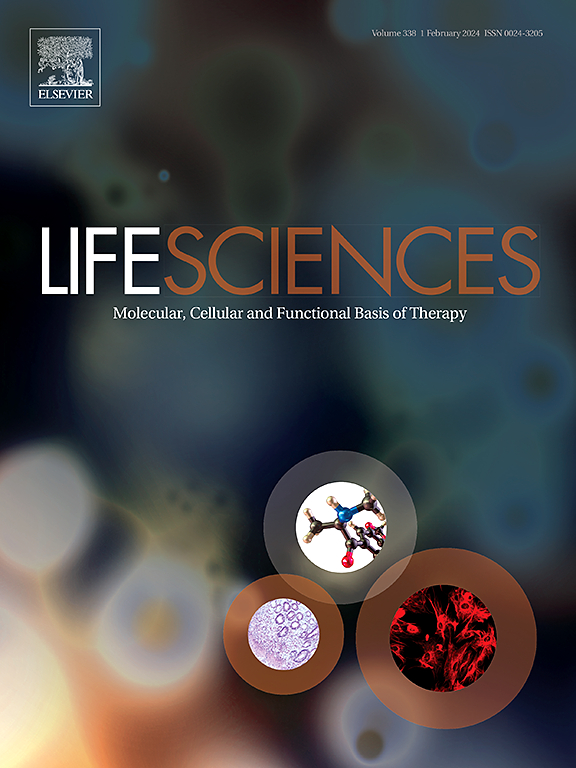STC1通过激活JAK/STAT信号通路抑制氧化应激,促进口腔鳞状细胞癌紫杉醇耐药
IF 5.2
2区 医学
Q1 MEDICINE, RESEARCH & EXPERIMENTAL
引用次数: 0
摘要
口腔鳞状细胞癌(OSCC)是口腔最常见的恶性肿瘤,耐药是化疗治疗的最大挑战。斯坦钙素1 (STC1)在多种癌症中与肿瘤恶性和化疗耐药相关,但其在OSCC紫杉醇(PTX)耐药中的作用尚不清楚。本研究旨在阐明STC1对OSCC PTX耐药的影响,并阐明其潜在机制。材料和方法通过逐步增加PTX浓度,建立耐PTX的OSCC细胞系CAL-27/PTX。转录组测序、CCK-8测定、western blotting、RT-qPCR、慢病毒介导的沉默或过表达、活性氧(ROS)检测和ELISA检测用于评估STC1的表达和功能。使用细胞系来源(CDX)和患者来源的异种移植物(PDX)模型进行体内验证。关键发现:CAL-27/PTX细胞中STC1的表达显著增加,并与癌症干细胞样特征和上皮-间质转化有关。下调STC1表达可抑制肿瘤的发展。机制上,STC1激活JAK/STAT信号通路,介导抗氧化基因(GPX4、FTH1和SLC7A11)的上调,从而减弱ptx诱导的氧化应激。此外,STC1通过旁分泌机制促进PTX抗性的细胞间转移。在体内,STC1高表达介导了CDX和PDX肿瘤模型中PTX的耐药。本研究发现STC1- stat3 - slc7a11轴是OSCC抗氧化应激的关键调控因子,强调STC1是克服化疗耐药和改善ptx治疗结果的有希望的治疗靶点。本文章由计算机程序翻译,如有差异,请以英文原文为准。

STC1 promotes paclitaxel resistance in oral squamous cell carcinoma by inhibiting oxidative stress via activating the JAK/STAT signaling pathway
Aims
Oral squamous cell carcinoma (OSCC) is the most common malignant tumor of the oral cavity, with chemoresistance is the greatest challenge in chemotherapeutic treatment. Stanniocalcin 1 (STC1) is correlated with tumor malignancy and chemoresistance in various cancers, but its role in OSCC paclitaxel (PTX) resistance remains elusive. This study aimed to clarify STC1's impact on OSCC PTX resistance and elucidate its underlying mechanism.
Materials and methods
The PTX-resistant OSCC cell line CAL-27/PTX was established by stepwise exposure to increasing PTX concentrations. Transcriptomic sequencing, CCK-8 assays, western blotting, RT-qPCR, lentiviral-mediated silencing or overexpression, reactive oxygen species (ROS) detection, and ELISA were used to assess STC1 expression and function. In vivo validation was conducted using both cell line-derived (CDX) and patient-derived xenograft (PDX) models.
Key findings
The expression of STC1 was significantly increased in CAL-27/PTX cells and linked to cancer stem cell-like characteristics and epithelial-mesenchymal transition. Knockdown of STC1 expression suppresses tumor development. Mechanistically, STC1 activated the JAK/STAT signaling pathway, which mediated the upregulation of antioxidant genes (GPX4, FTH1, and SLC7A11) to attenuate PTX-induced oxidative stress. Additionally, STC1 promoted intercellular transfer of PTX resistance via a paracrine mechanism. In vivo, high STC1 expression mediated PTX resistance in both CDX and PDX tumor models.
Significance
This study identifies the STC1-STAT3-SLC7A11 axis as a key regulator of resistance to oxidative stress in OSCC, highlighting STC1 as a promising therapeutic target to overcome chemoresistance and improve outcomes in PTX-based therapies.
求助全文
通过发布文献求助,成功后即可免费获取论文全文。
去求助
来源期刊

Life sciences
医学-药学
CiteScore
12.20
自引率
1.60%
发文量
841
审稿时长
6 months
期刊介绍:
Life Sciences is an international journal publishing articles that emphasize the molecular, cellular, and functional basis of therapy. The journal emphasizes the understanding of mechanism that is relevant to all aspects of human disease and translation to patients. All articles are rigorously reviewed.
The Journal favors publication of full-length papers where modern scientific technologies are used to explain molecular, cellular and physiological mechanisms. Articles that merely report observations are rarely accepted. Recommendations from the Declaration of Helsinki or NIH guidelines for care and use of laboratory animals must be adhered to. Articles should be written at a level accessible to readers who are non-specialists in the topic of the article themselves, but who are interested in the research. The Journal welcomes reviews on topics of wide interest to investigators in the life sciences. We particularly encourage submission of brief, focused reviews containing high-quality artwork and require the use of mechanistic summary diagrams.
 求助内容:
求助内容: 应助结果提醒方式:
应助结果提醒方式:


